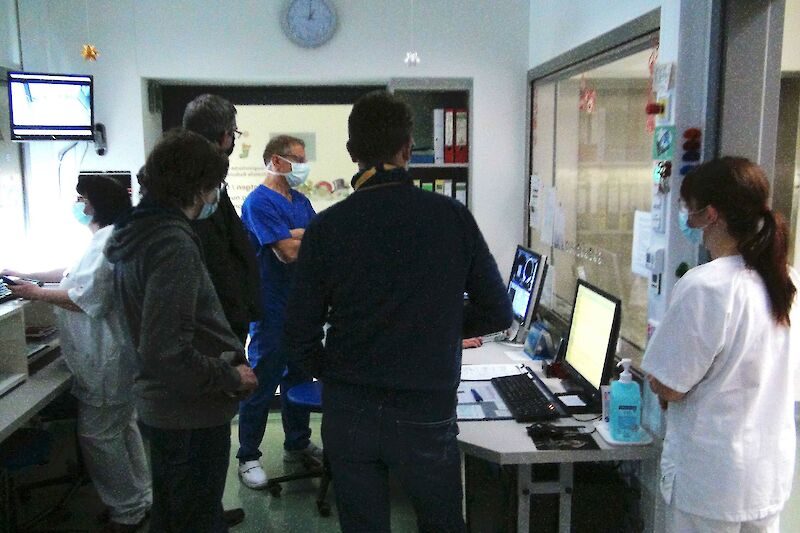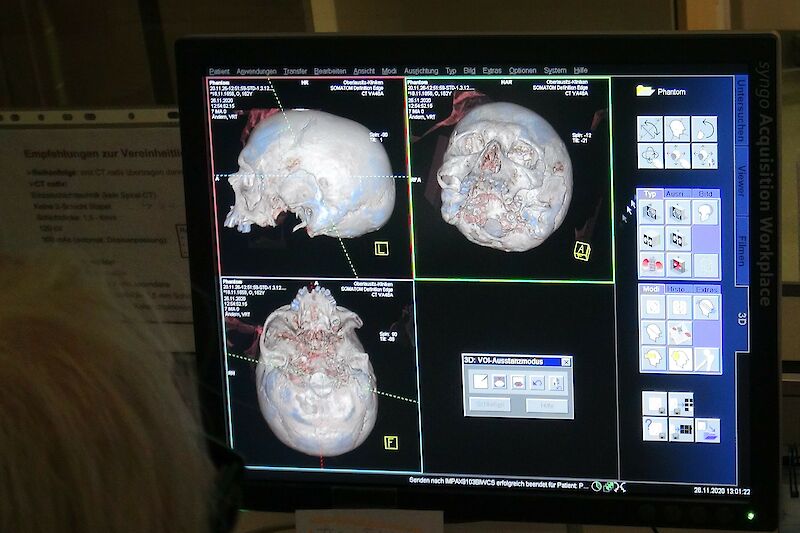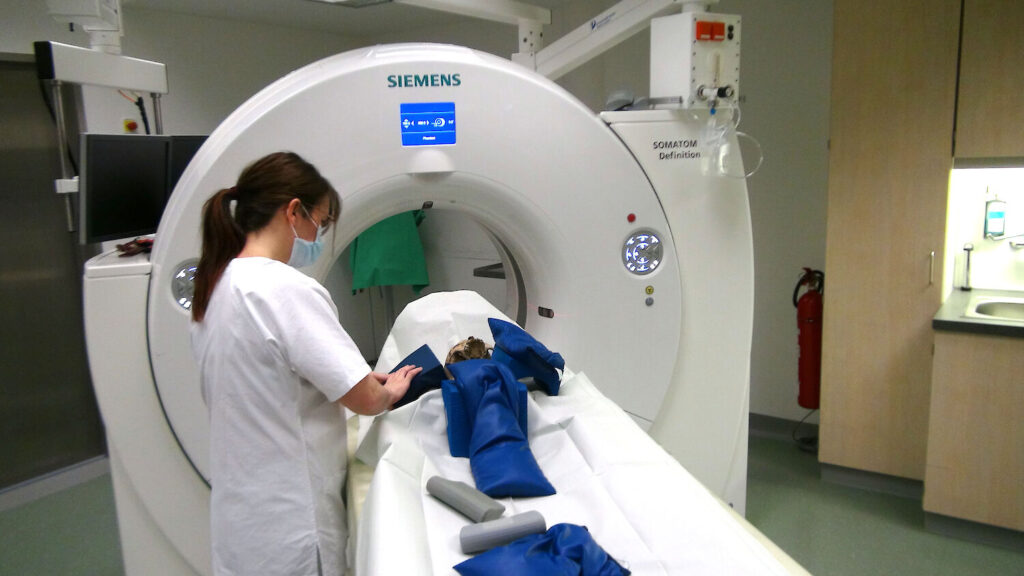The oldest patient in the Bautzen Clinic
The entire team watched with excitement as embodied history was revealed to modern medical technology. Thanks to computer tomography, an early medieval skull from the collection of the Bautzen Museum was x-rayed in layers every 0.6 mm. With the resulting spatial image, researchers hope to uncover previously hidden details of the history and living conditions of a person who lived in Upper Lusatia in the 11th or 12th century. It was during this period that a burial took place, of which a very well-preserved skeleton with a skull was found in the 1960s between Liebon and Zscharnitz to the northwest of Bautzen. As part of the 1000 years of Upper Lusatia project, the skeleton was three-dimensionally scanned a month ago, and now additional details will be added to the CT scan. The results of both studies will be used by the partners from the University of Life Sciences in Wrocław Department of Anthropology to create a reconstruction of the face and whole head of an inhabitant of Upper Lusatia from 1000 years ago. Later on this will be presented in an exhibition dedicated to the early medieval settlement of the region, which is scheduled to open in the Museum in Bautzen at the beginning of 2022.


